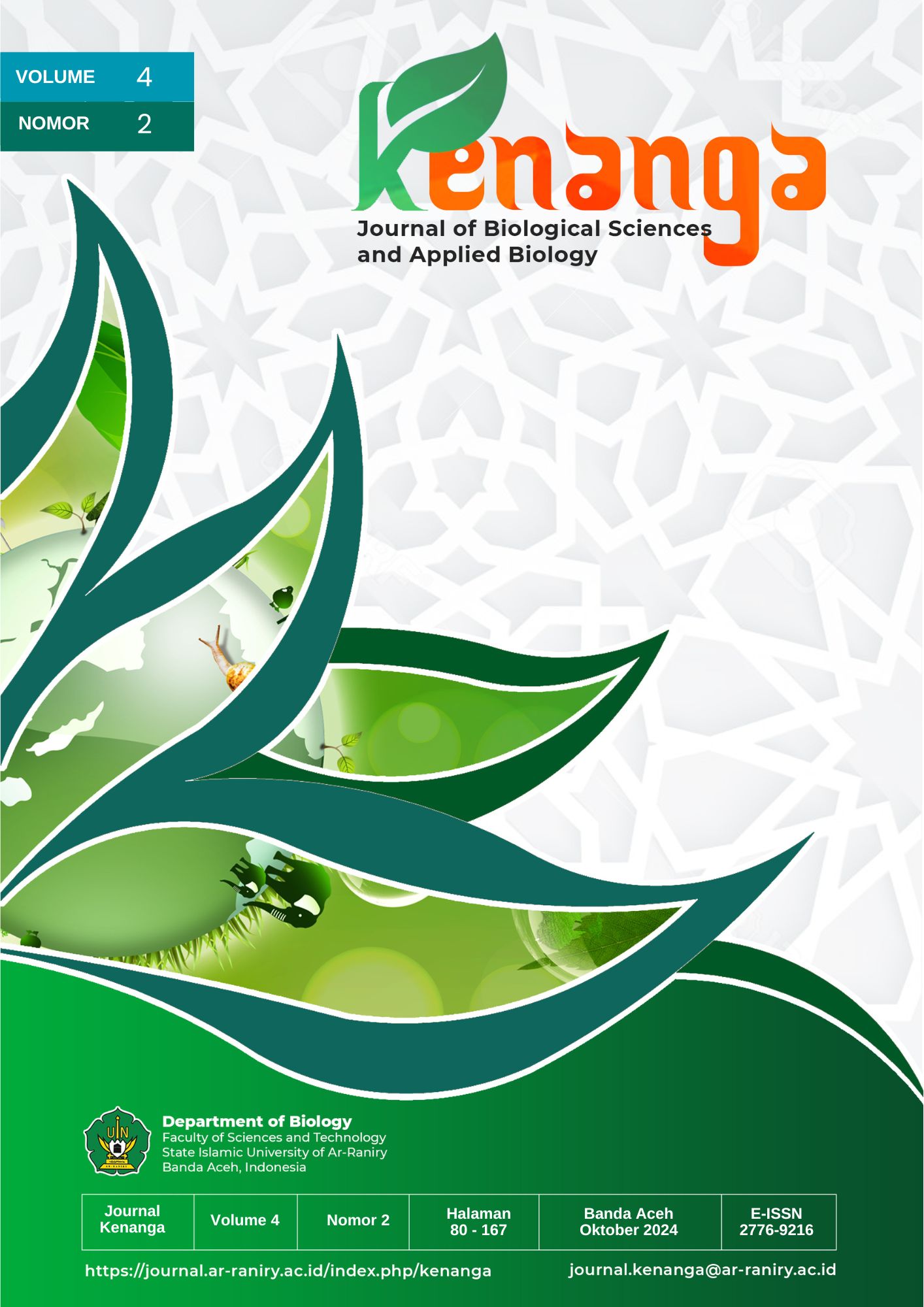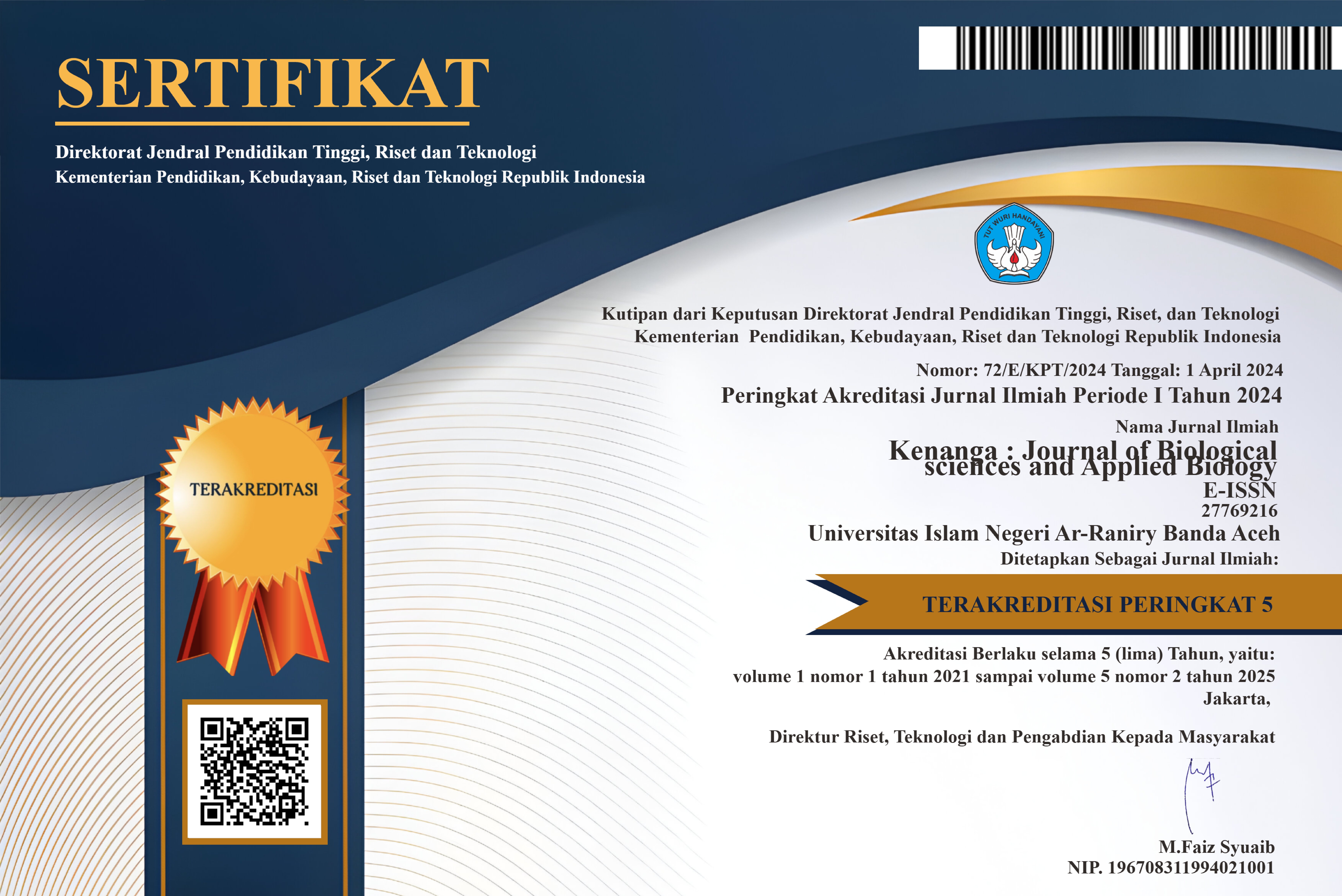TOKSISITAS ORAL AKUT SINGLE-DOSE EKSTRAK ETANOLIK DAUN GAHARU Aquilaria malaccensis Lamk. PADA TIKUS (Rattus norvegicus Berkenhout, 1769) GALUR WISTAR
DOI:
https://doi.org/10.22373/kenanga.v4i2.5404Keywords:
agarwood, drug discovery, safety assessmentAbstract
Aquilaria malaccensis Lamk., one of tree species producing agarwood, has been utilized by the people of Southeast Asia (particularly Indonesia and Malaysia) as a component in traditional medicine due to their phytochemical constituents. This study was carried out to assess acute toxicity of oral administration of ethanolic extract of A.malaccensis (EEAM) using female Wistar rats as model animal. Procedure in accordance with OECD Guidelines for the Testing of Chemicals Test No. 423 with administration dose of 2000 mg/kg bw (single-dose). Parameters observed including signs of toxicity, body weight, body temperature, hematological profile (complete blood count), as well as evaluation of liver function (ALT and bilirubin) and renal function (BUN and creatinine). Data were analyzed statistically based on one-way ANOVA (ɑ=0.05) continued with Duncan's post hoc test (ɑ=0.05) and visualized as line charts. Results showed that neither mortality nor sublethal effects were recorded during 14 days of the experiment. The chart exhibited that the group received EEAM demonstrated a comparable trend to the control group for all parameters. Therefore, it can be concluded that EEAM is safe or no-observed-adverse-effect-level (NOAEL) for single-dose oral administration at the dose of 2000 mg/kg bw. If standardized following the Globally Harmonized System of Classification and Labeling of Chemicals (GHS), EEAM is classified in Category 5 (LD50 > 2000 mg/kg bw). Based on this finding, we will continue to conduct further study to assess the repeated-dose acute oral toxicity of EEAM (subacute period)


























